
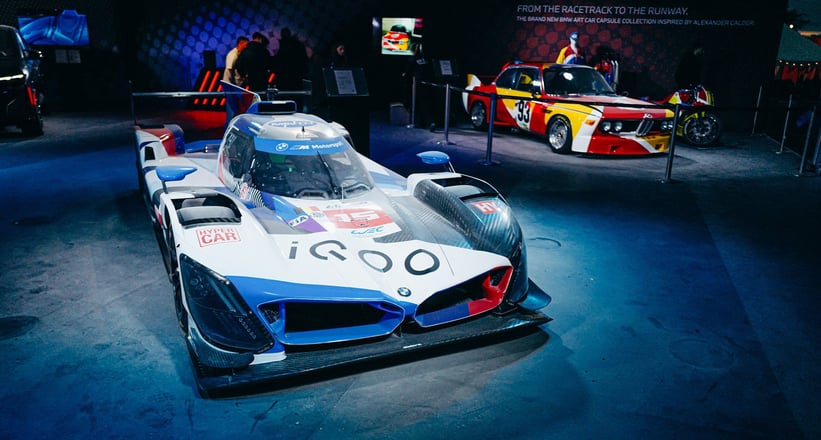
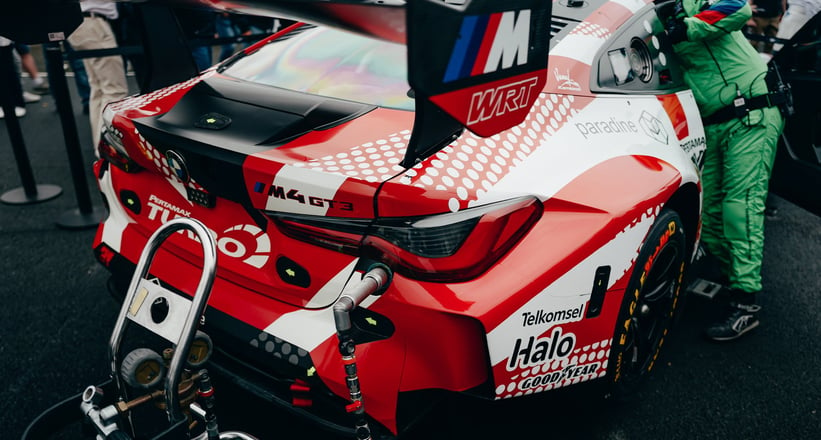
It takes a special kind of bravery to step foot into a race car bound for glory at one of motorsport’s most challenging spectacles. But for 100 years, and now one extra, these brave men and women have relished in the challenge. Le Mans isn’t a race, it’s survival. Having a fast car only aids grid position come race day, but by the time the flag drops, and the adrenaline has subsided, the true meaning of speed comes to fruition. For BMW M Motorsport, 2024 was poised to be a Le Mans 24 hour race for the ages. And they had brought along with them a host of talented drivers, experienced team leaders, and truly competitive machinery to get the job done.



As I was welcomed into the sleek hospitality suite adorned with BMW M branding, all eyes were on the art. Thankfully for BMW, they have plenty of artful machinery in their roster, and this year the landmark 20th BMW Art Car created by US artist Julie Mehretu stunned the world with its creativity. But besides the aesthetics of the livery, the car had clear intentions of joining its sibling, the traditional M-liveried #15 BMW V8 Hybrid, in the fight for the win. Everywhere I looked around the suite, glimmers of by-gone Art Cars filled the shelves and walls, making me wish I’d brought a bigger suitcase, one that could have fitted the rear trunk of Jeff Koon’s incredible BMW M3 GT3. The highlight was certainly a large-scale model of Julie’s creation she used to prepare the full-scale car.

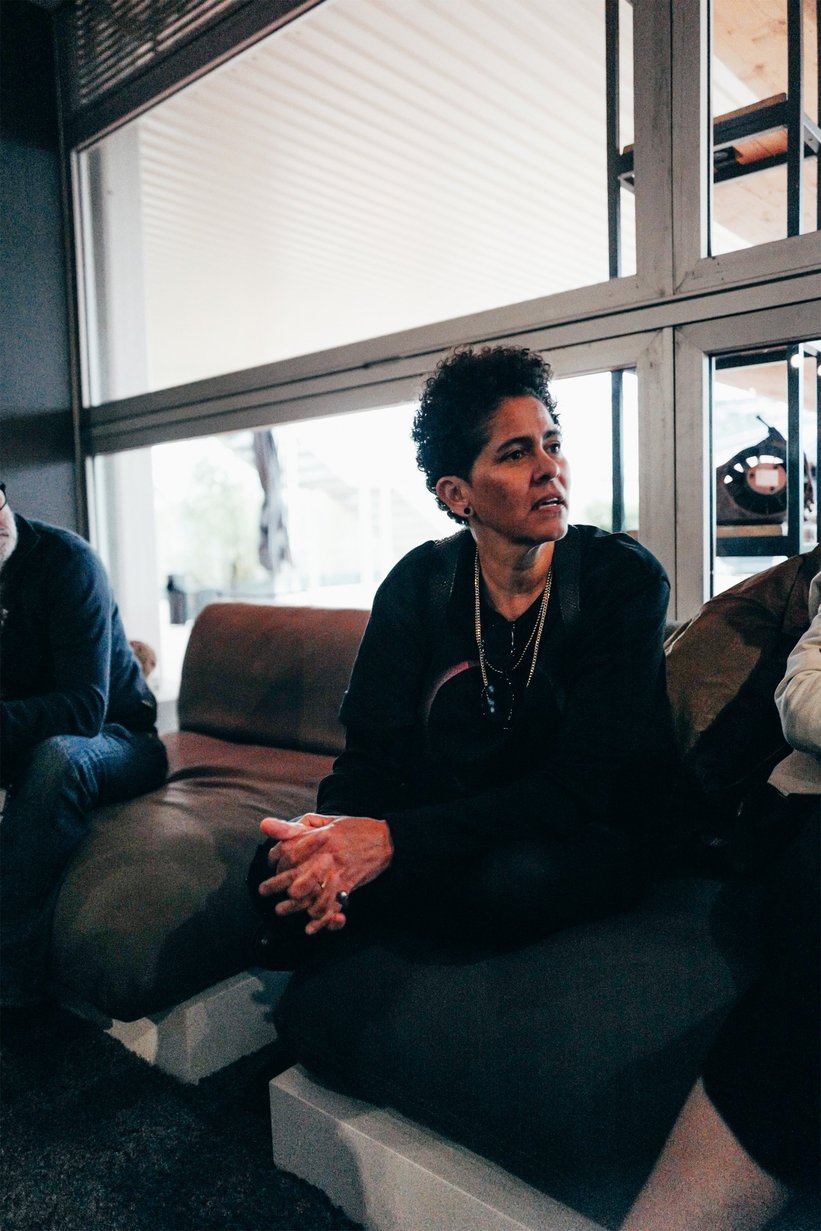
Before the race began, I perched myself alongside other journalists for a brief chat with Julie, who was gearing up to see the car on the grid for the first time. Her passion was infectious, and despite stating that she had no prior knowledge of Le Mans, nor of motorsport in general, she truly understood the significance of joining the history books alongside the likes of Warhol, Lichtenstein, Koons, Holzer and so many others. “It becomes a different thing all together when the car finishes the race,” Julie explained. “The debris, the scrapes, the bugs, it becomes another piece of art entirely, I’m just the one to lay down the first layer of paint!”

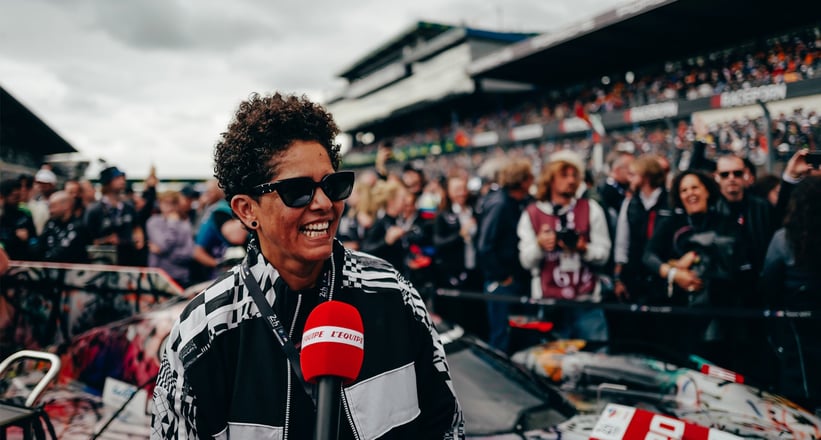
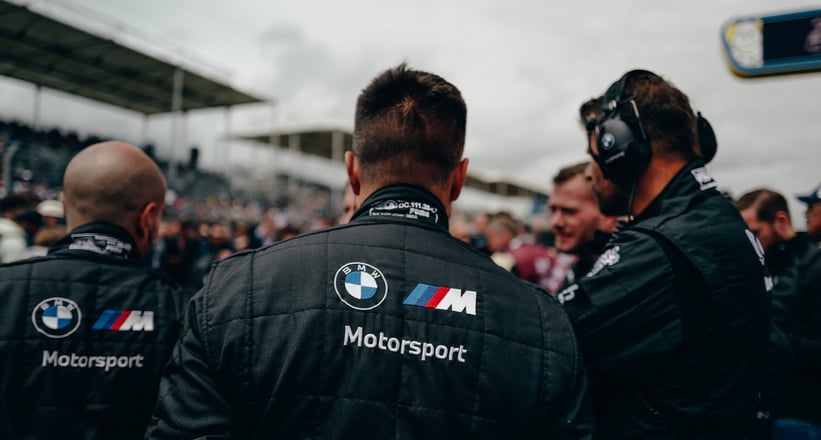
As the 4pm start time loomed, I along with thousands of others were let loose onto the hallowed start-finish straight, and was greeted by a truly unforgettable atmosphere. A true carnival, with crowds rendering the cars almost impossible to spot. Eventually, I found what I’d been looking for, the #20 Art Car in all its glory for the very first time. The energy surrounding the car was electric, all intrigued and appreciative in seeing another BMW Art Car join the ranks of the 3.0 CSL and V12 LMR. As I soaked in the atmosphere, it dawned on me the task these drivers will face – passing the very line I was stood on, but over 300 times in 24 hours while approaching 200 mph.

As the race got underway, so too did the drama in the hypercar class, which boasts a mouth-watering line-up of marques seeking glory. Cadillac, Toyota, Porsche, Jota, Peugeot, BMW M, Lamborghini, fan-favourites Alpine, and centenary winners Ferrari who immediately held nothing back, treating the first stint as a stern way of asserting their dominance. The #15 BMW M V8 Hybrid, starting sixth, fell victim to Le Mans’ ever-changing weather conditions, and suffered a spin and barrier-graze just 34 minutes into the 24-hour race. Thankfully, a brief check over from the team and it was back on track for the trio, who were quick to return to their groove and found pace. Up front, even in the early stages, the endurance challenge rather resembled a sprint race, with Ferrari, Porsche and Toyota changing positions seemingly every lap, all the while with Cadillac nipping at their heels.


Experiencing darkness at Le Mans, as a first timer, was hair-raising. By the time the evening rolls by, your senses have grown accustomed to the ever-present hum of engine sounds, with only the Cadillac’s V8 burble being recognisable. The early hours of the morning are when the simplest of mistakes can send the entire race into turmoil. After the BMW Art Car suffered heavy floor damage from hitting the barriers at the Ford chicane, the WRT Team was left with plenty to fix in order to keep the dream alive. This left all eyes on car #15, when disaster struck: approaching top speed, the BMW was hit by the #83 Ferrari 499P, unsettling the car and propelling it into the barriers. Incredibly, Dries Vanthoor emerged unscathed from the 300 km/h crash, but he and his teammates hopes were dashed.
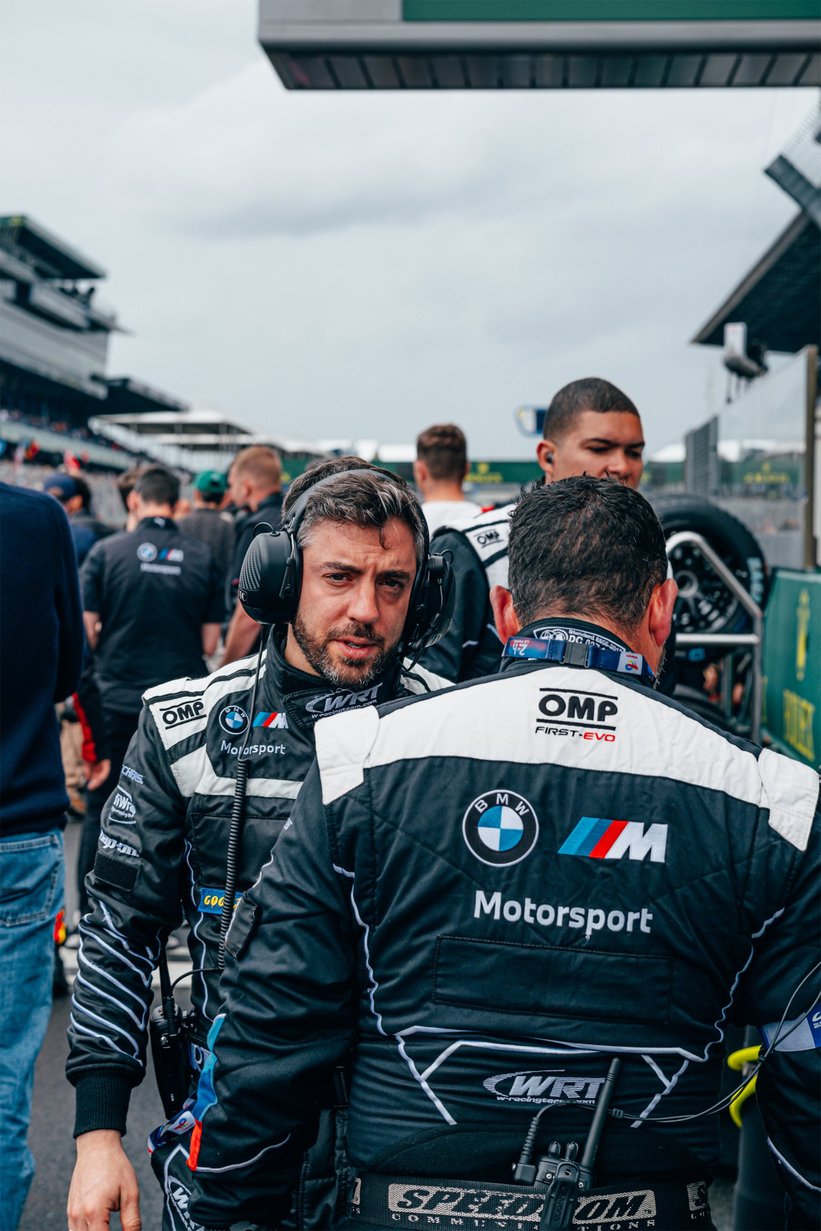

This early retirement left all of BMW’s hypercar hopes on the Art Car, which was some 120 laps behind the leaders and counting, due to its lengthy repairs in the garage. Those hard-working individuals were rewarded as the clocked ticked down, and after some relentless rebuilding, #20 returned to the race and managed to register as finishing under its own steam.
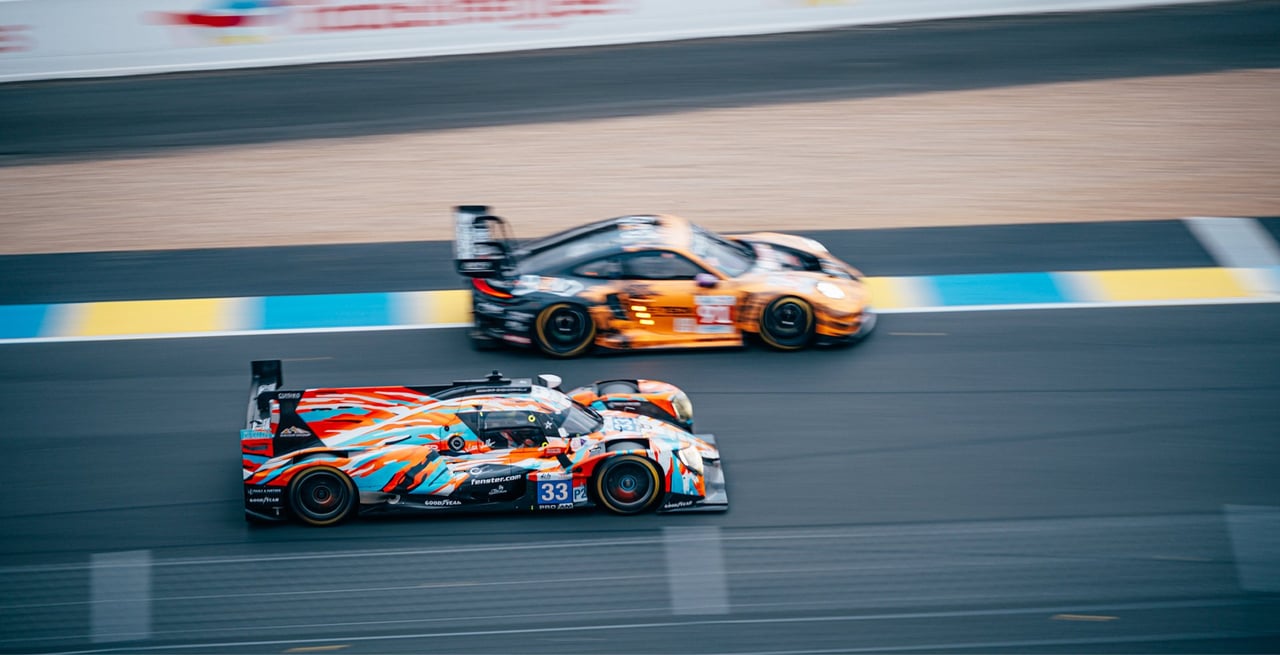
While the hypercar battled heated up, so too did the LMGT3 class, which saw two BMW M hopefuls poised for great results. Of course, this is Le Mans, and as I learnt while speaking to Andreas Roos, head of BMW Motorsport, “Le Mans requires lots of things, speed, determination, teamwork, but also, perhaps more than anything, luck. Luck can sometimes win you the greatest motorsport event in history.” Sometimes luck is on your side, and sometimes, luck turns against you in the harshest of ways. The two M4 LMGT3 cars shot out of the starting gates, the #46 car driven by Valentino Rossi, Maxime Martin and Ahmad Al Harthy on course to claim a triumphant victory, before Al Harthy connected with the barriers deep into the rain-soaked darkness and had to retire.


With two cars down and one in the garage, all attention turned to the #31 BMW M4, sporting a striking livery that harked back to the 1970s, Augusto Farfus, Sean Gelael, and Britain’s Darren Leung delivered a faultless drive and brought home the first BMW podium at Le Mans for 13 years. With almost all hope lost, seeing the trio soak in the confetti and champagne on the podium was an outstanding moment.
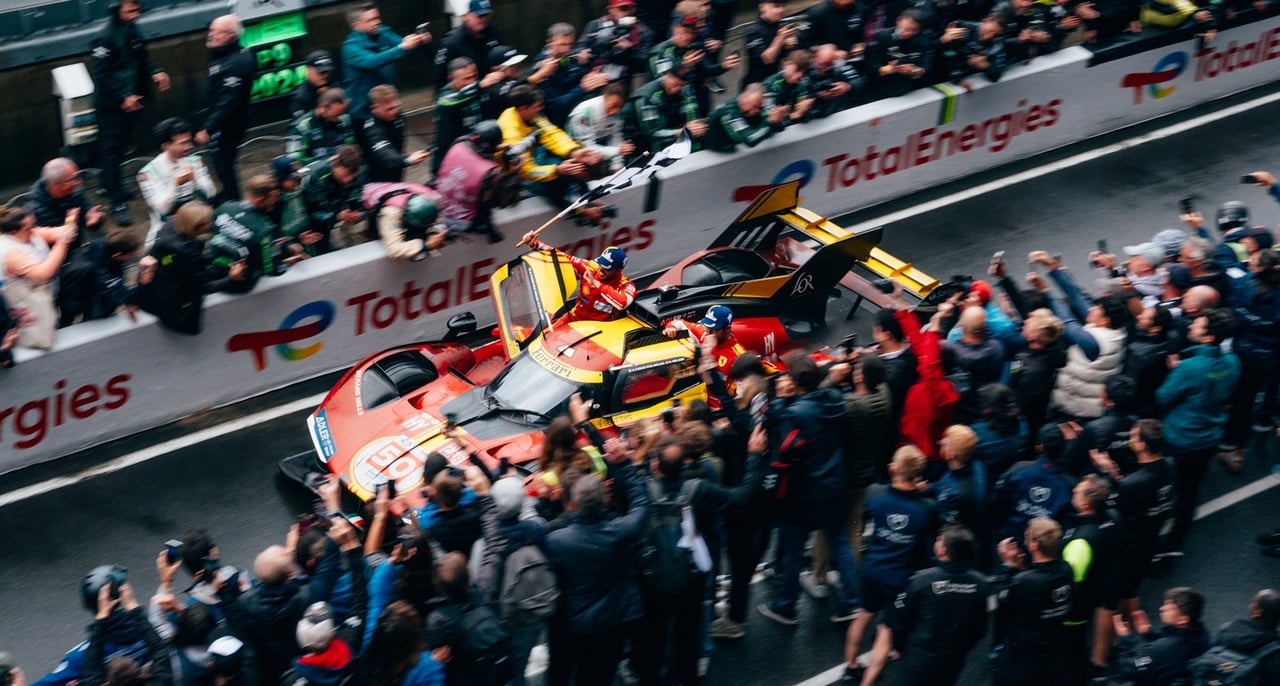

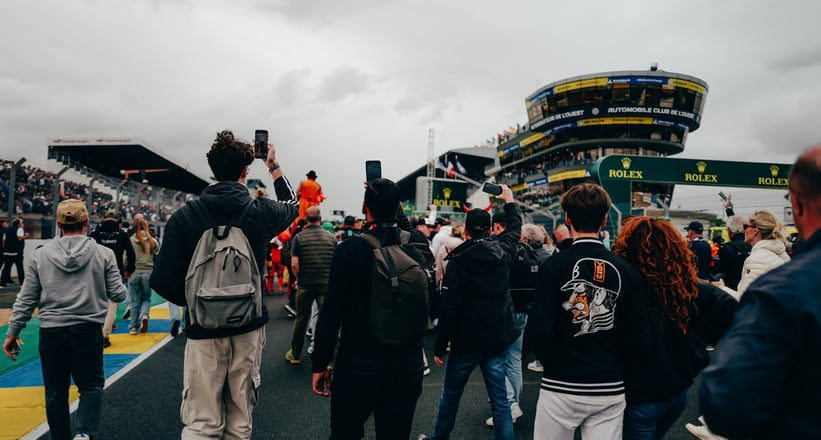
Above all, it was the fans who were the lucky ones. All 319,000 of them, who seemingly bring everything but the kitchen sink with them to settle in for the full 24 hours of spectating. Those eager fans, an amount almost overtaking the entire population of Iceland, were treated to what many believed to be up there with the very best in the 101 years of Le Mans. The intense battles across all classes, but particularly within the hypercar class got onlookers on their feet for what felt like the entire 24 hours, with the region’s ever-changing weather conditions bringing the drama to another level entirely as each hour ticked by.
I’d heard the term ‘performative art’ around the lead up to the race, with Julie Mehretu’s creation marking a landmark moment for the BMW Art Car series. And despite not achieving the result they had hoped for, the art of competition, teamwork, support and determination is one that deserves to be in every art gallery around the world.
Photos: Elliot Newton










































































